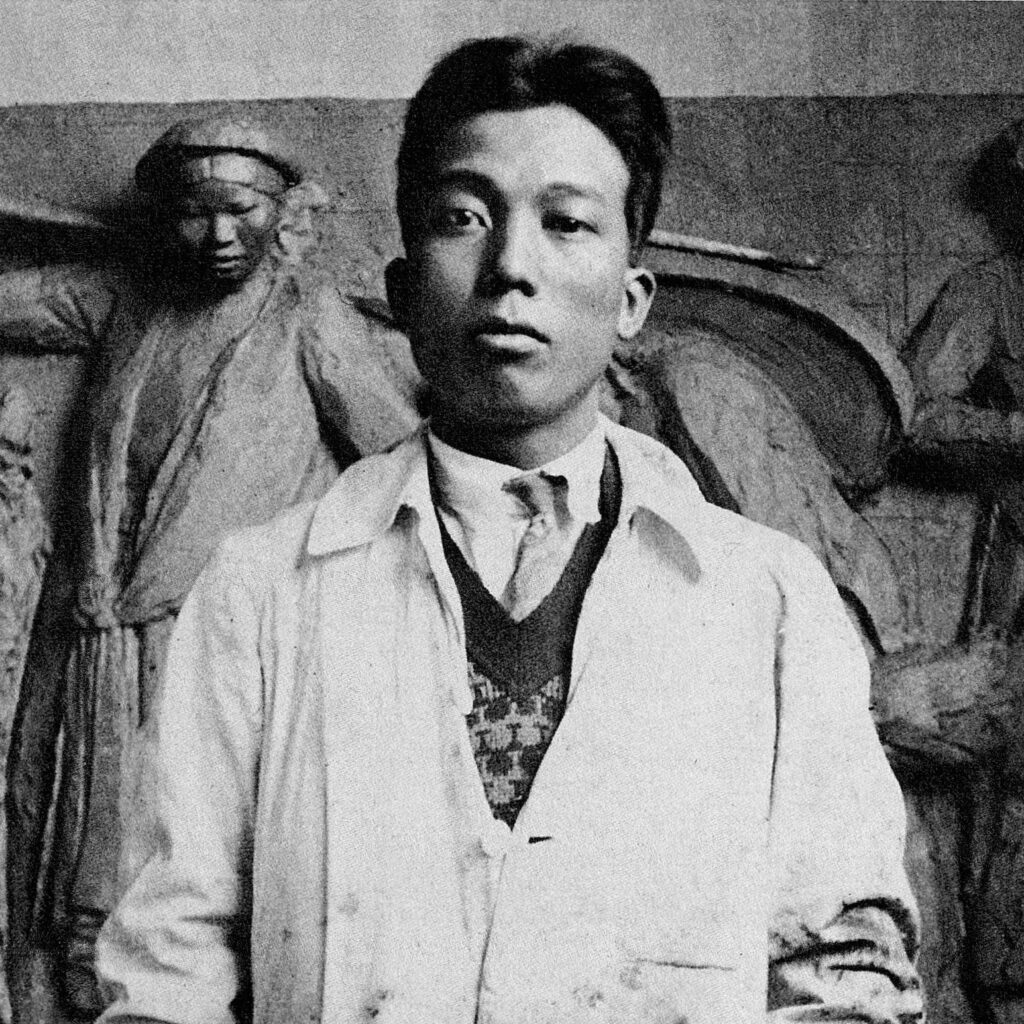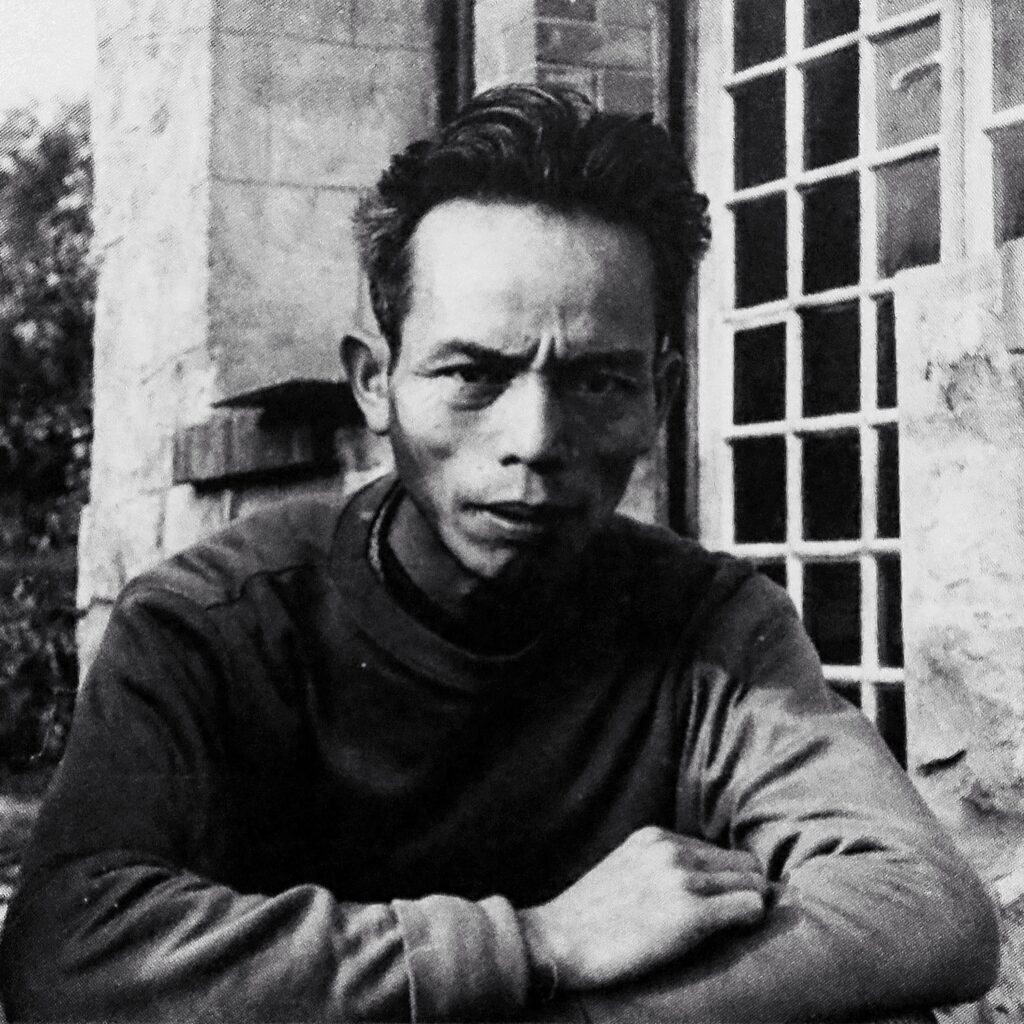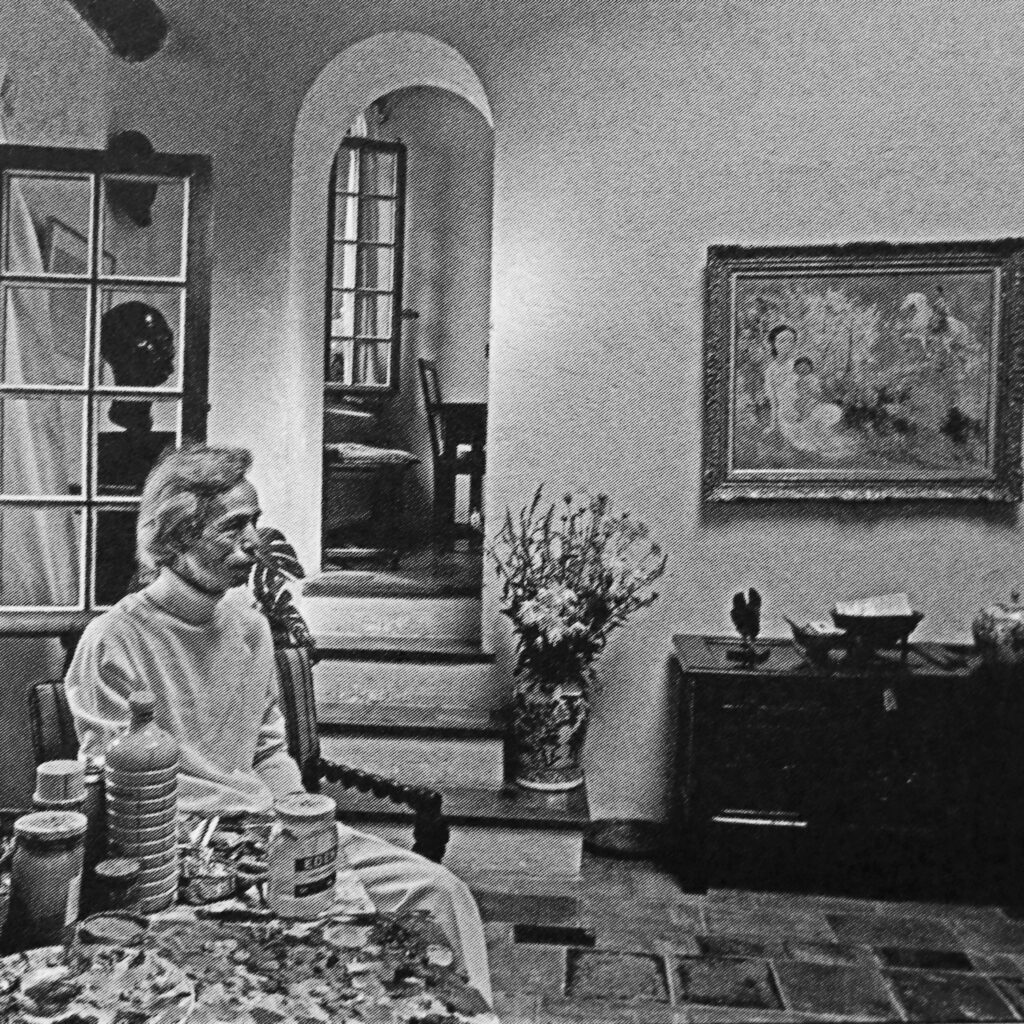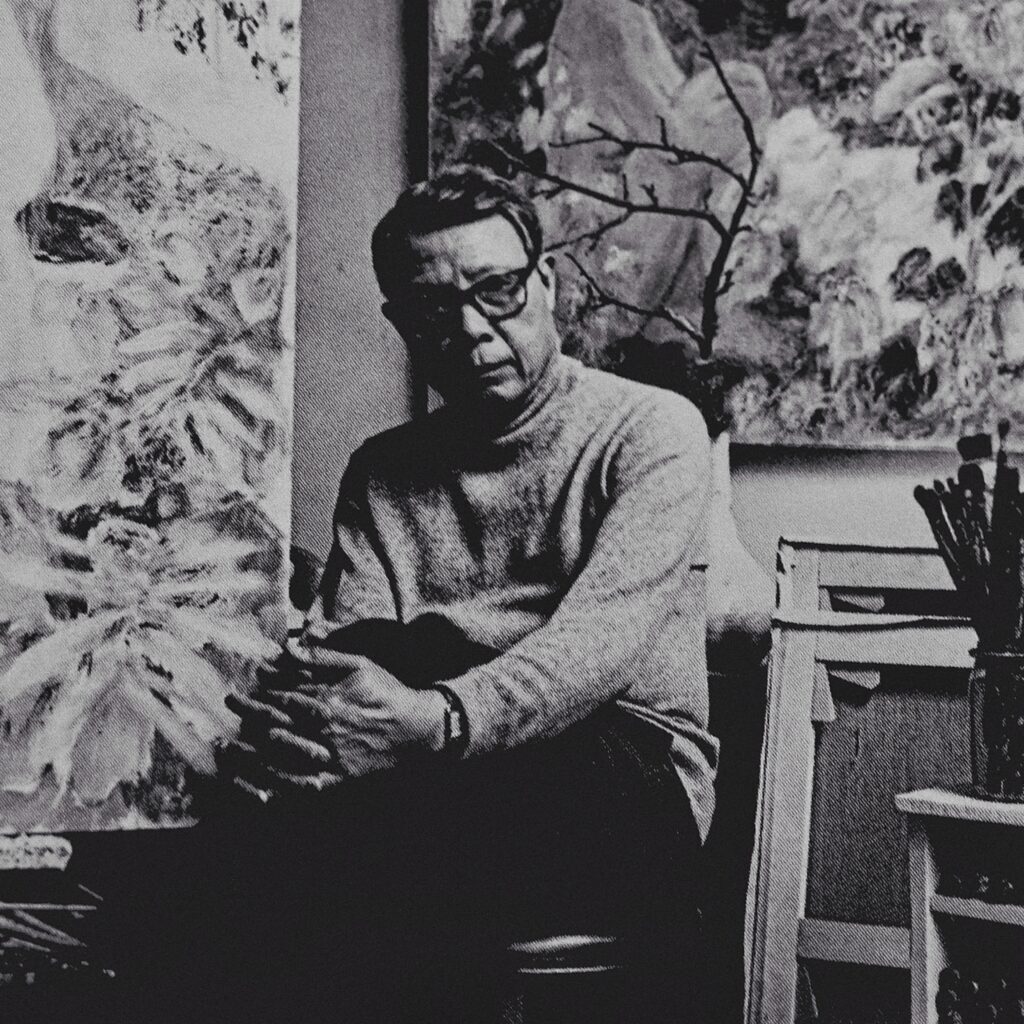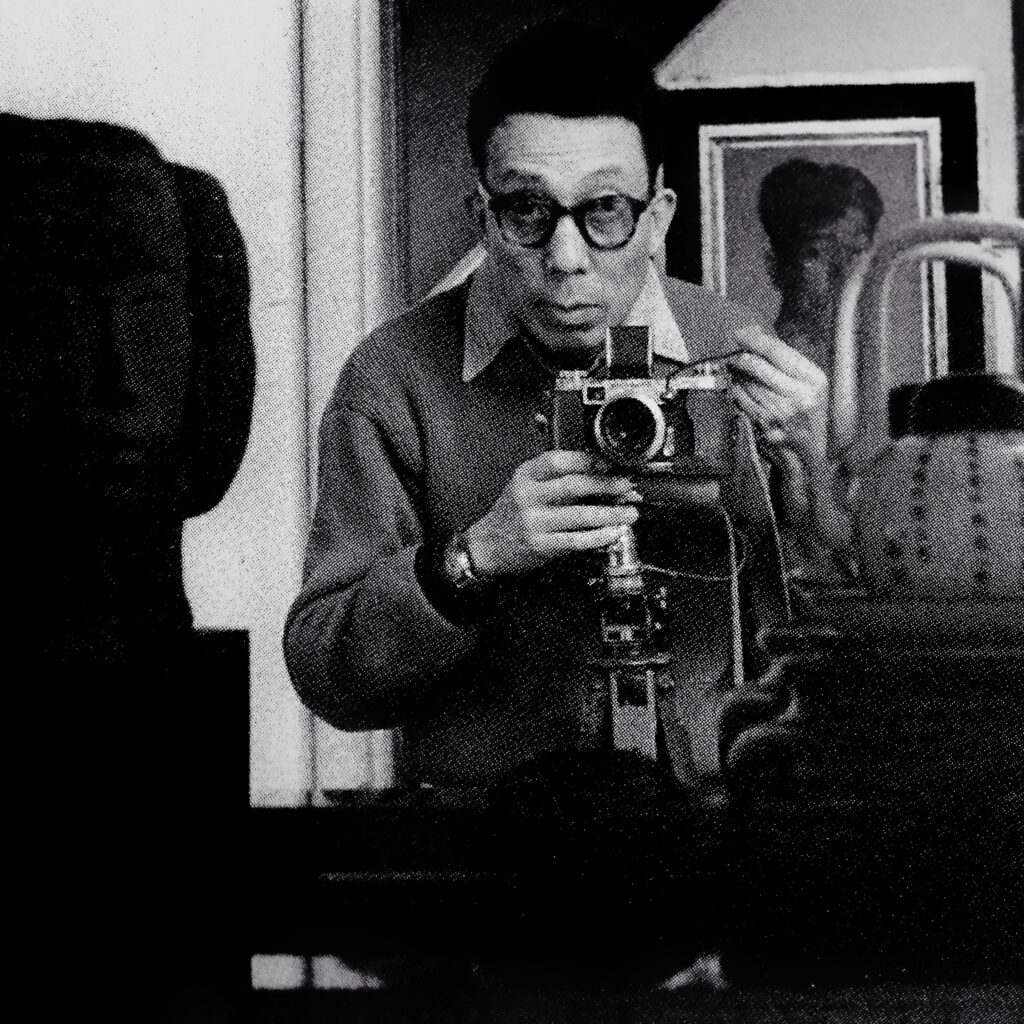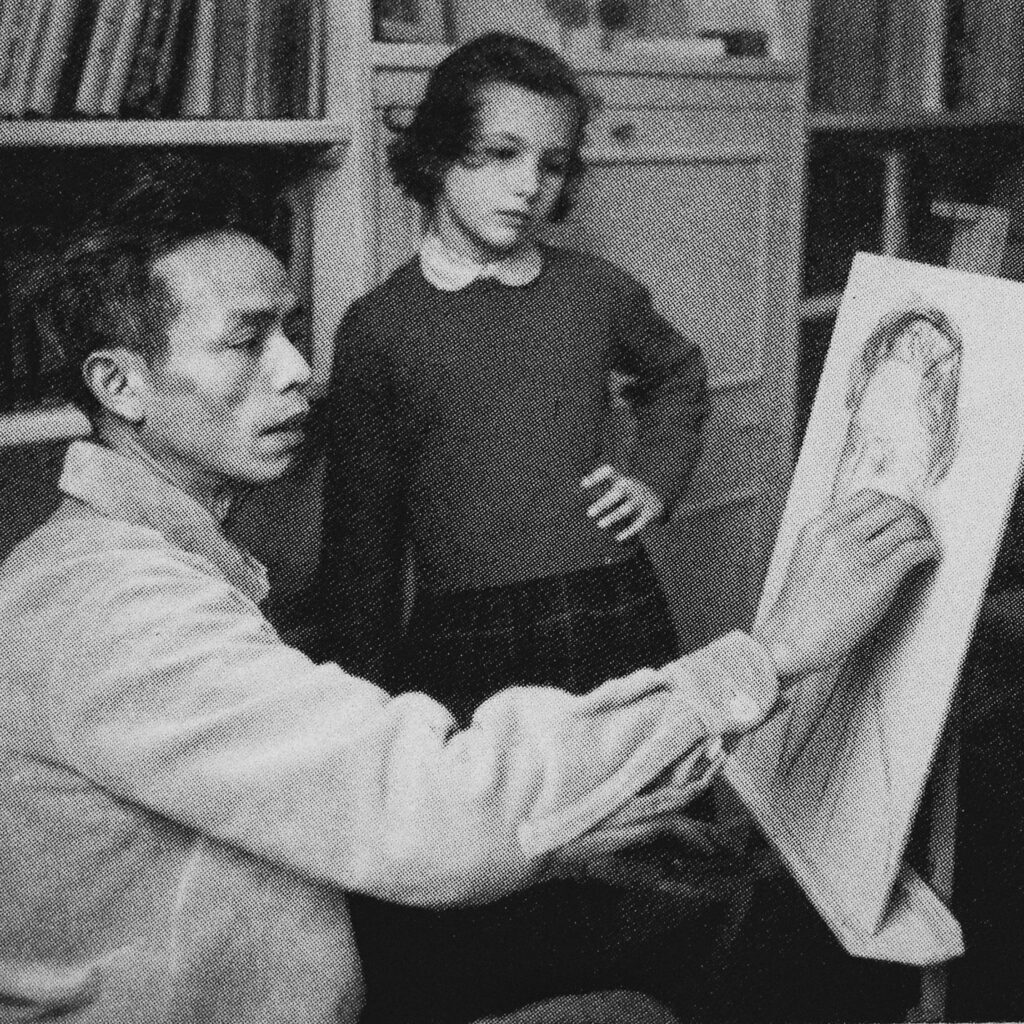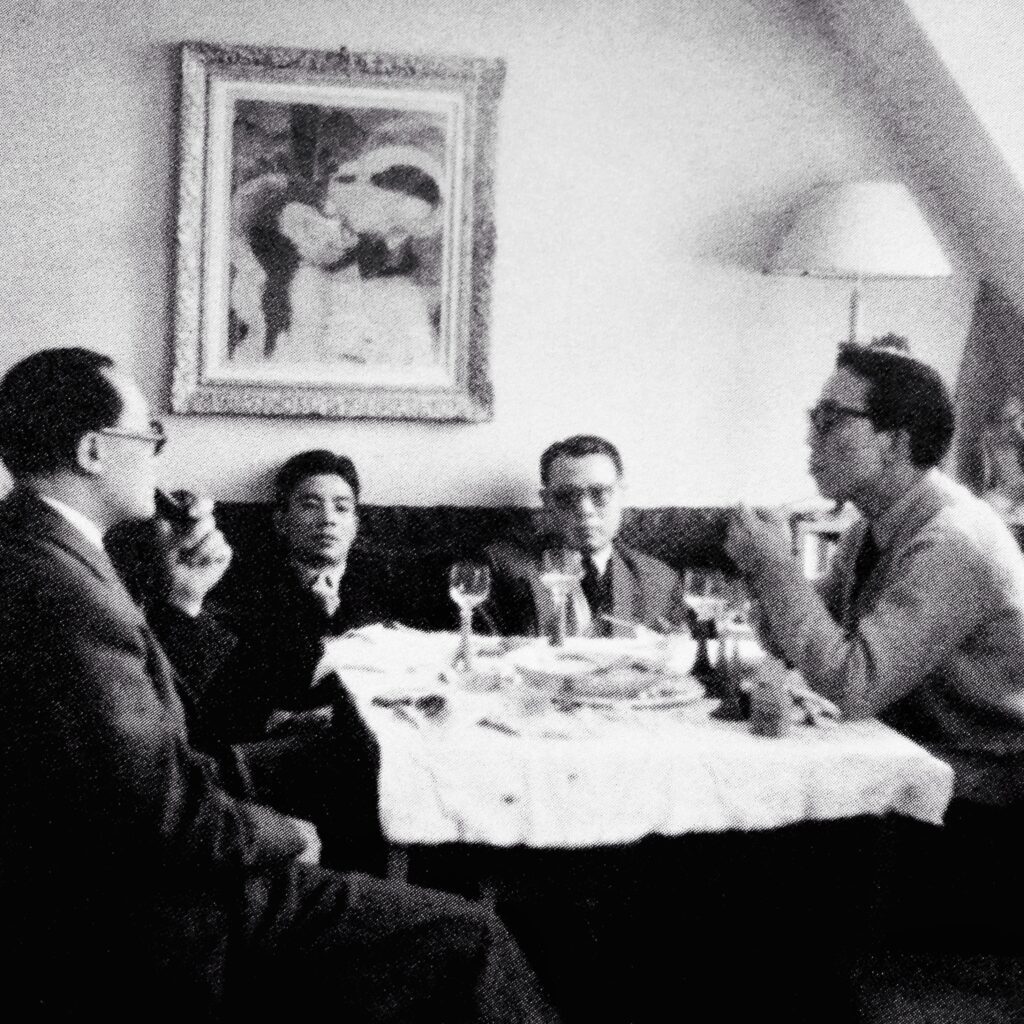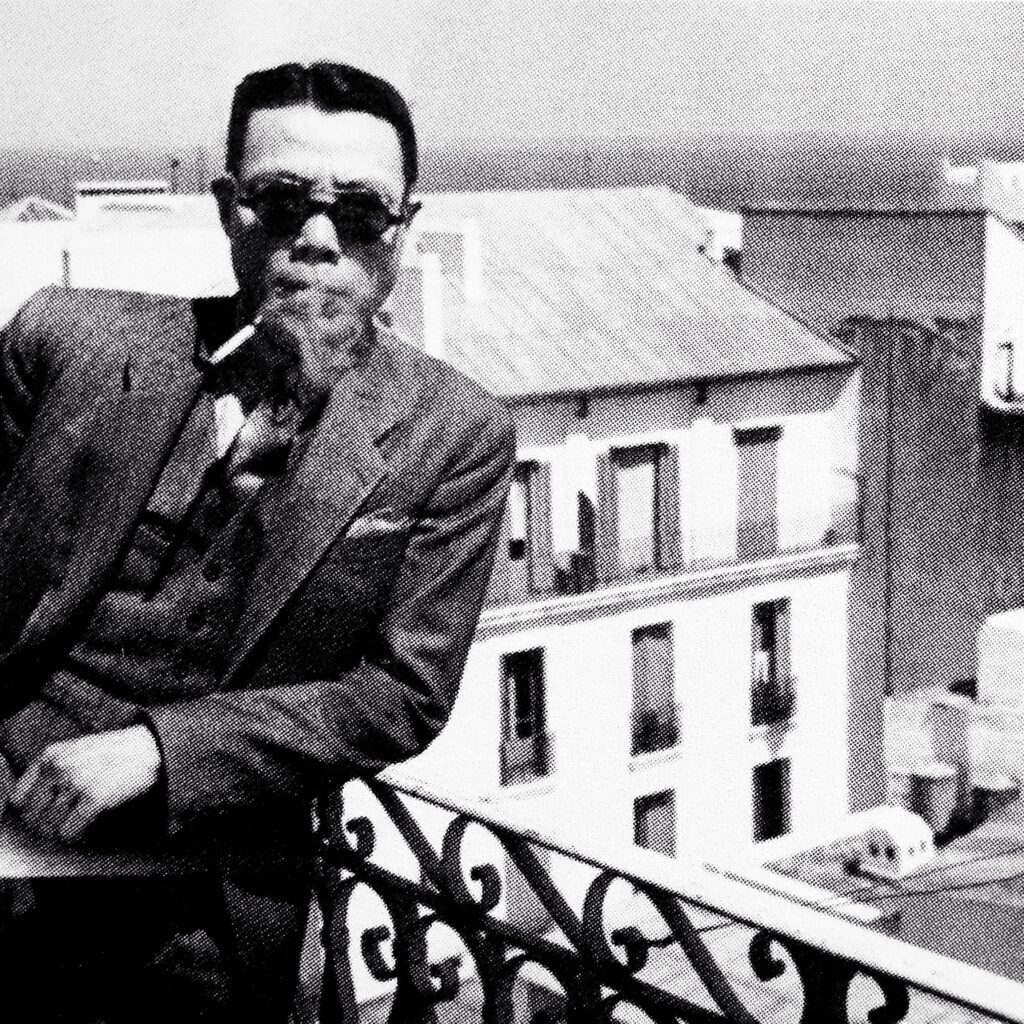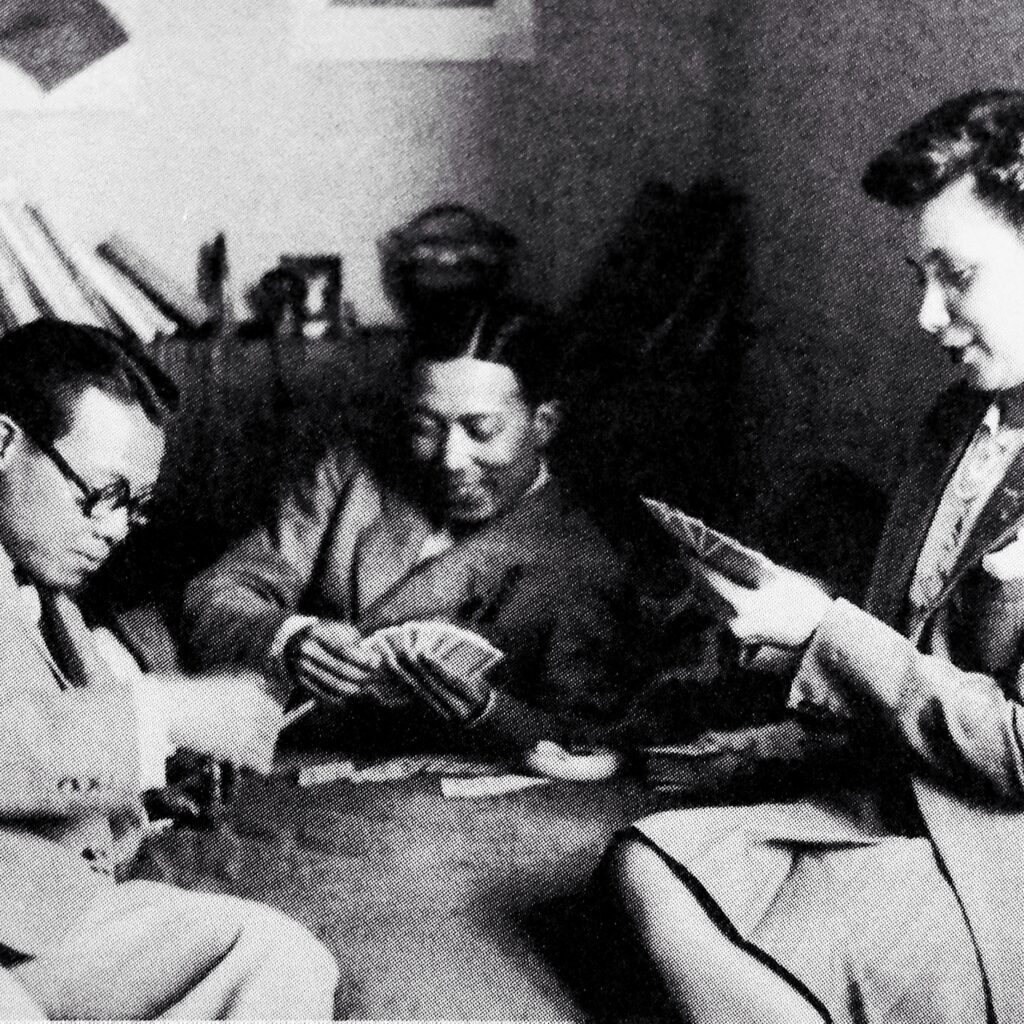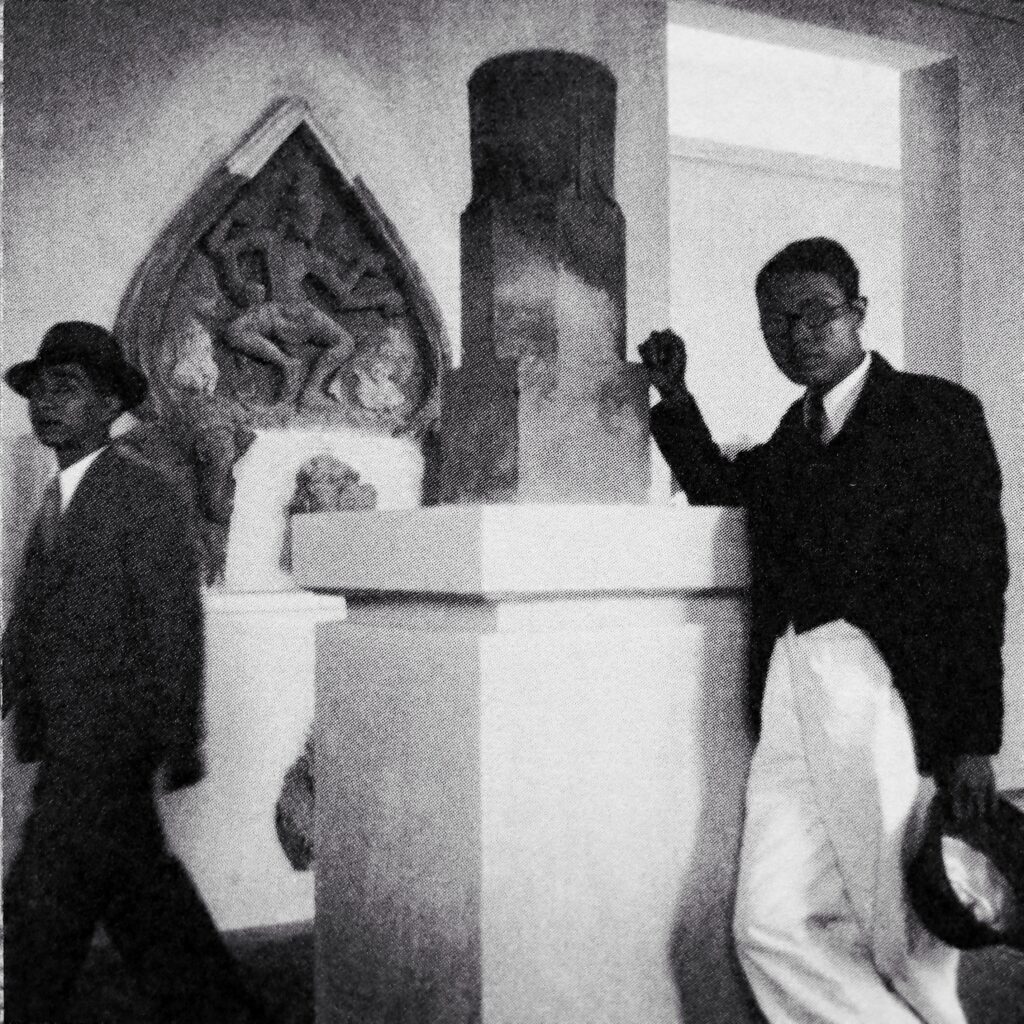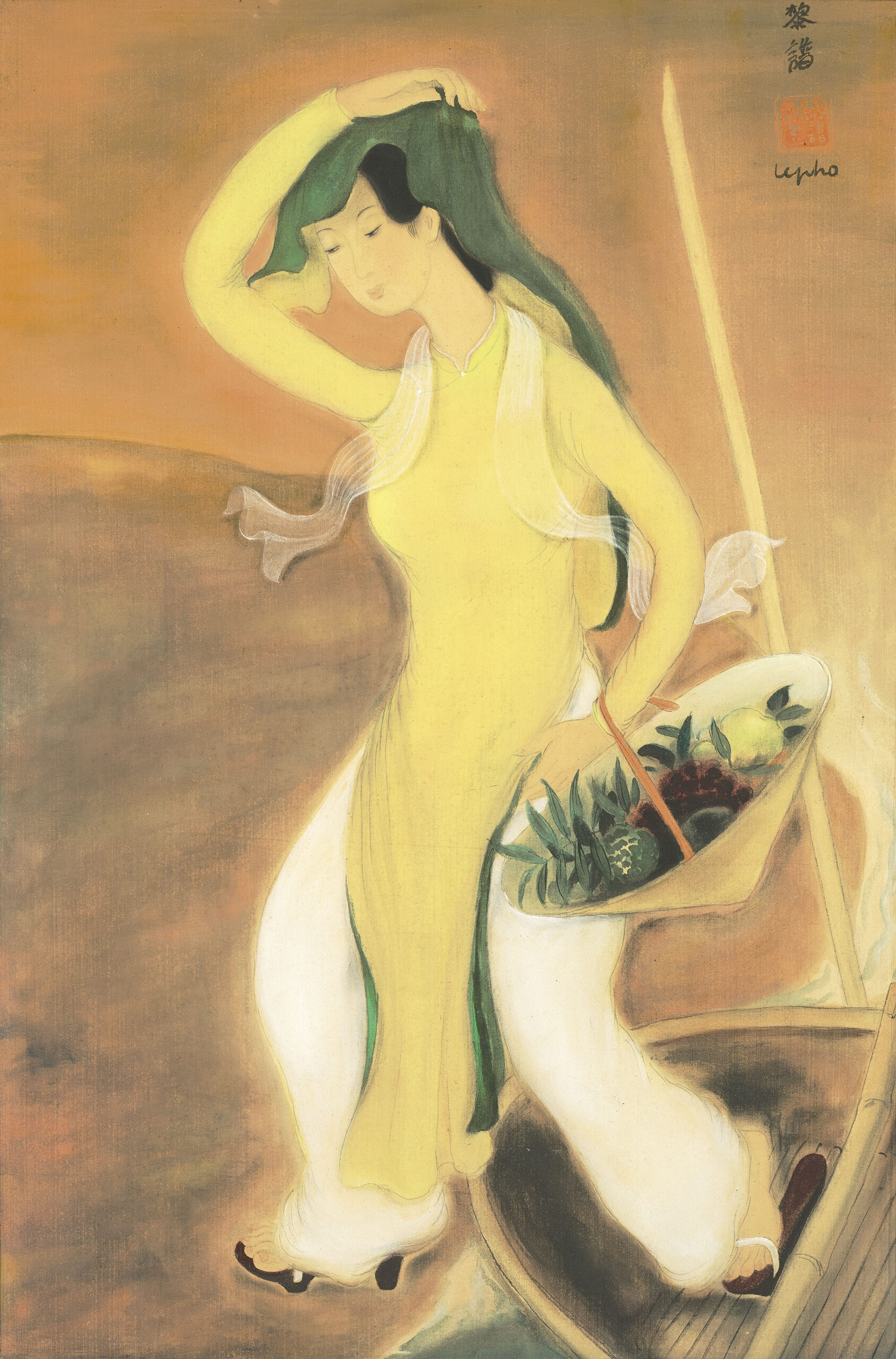
Le Pho (Vietnam, 1907-2001)
La femme en jaune (Woman in Yellow)
signed in Chinese, signed ‘lepho’ (upper right), inscribed and titled ‘408 Romanet A 71 La femme en jaune’, with a stamp from Algerian customs (on the reverse)
ink and gouache on silk
42.5 x 28.3 cm. (16 3/4 x 11 1/8 in.)
Painted circa.1938
one seal of the artist
Provenance
Galerie Romanet, Algiers, Algeria
Private Collection, France
Collection of Jean-Marc Lefèvre, Paris, France
Exhibited
Algiers, Algeria, Galerie Romanet & Galerie Pasteur, 1941-1942
"Who wouldn’t be seduced by this woman wearing a free-flowing ao dai, who makes sure the wind does not tousle her hair, as her hat serves as a fruit basket…? Her assertive step strikes the ground and in no way alters her grace, it amplifies it. Dignified beauty and charming strength of the Vietnamese woman. "
LE PHO, LA FEMME EN JAUNE, CIRCA 1937: THE JOURNEY IS A DEMIURGE.
What makes this work exceptional, in addition to its subtle execution, is that the artist offers a beautiful Tonkinese lady all grace and elegance, but, this time she is set in movement dierent to a solemn representation usually found in his first period. Here, he also conveys a sense of observation on an ethnographic level, which is very rare for the artist.
The woman, of faultless elegance with her yellow ao dai and her white scarf, has inverted her conical hat to carry lotus seed pods, plums and guavas. Anxious to keep her diaphanous complexion, or perhaps to avoid the rain falling on her hair, she placed on her head a lotus leaf (which she has just pulled out of the water as the stem shows) and holds it firmly on her head like a scarf. We notice an inversion, already seen in other works, of the hand (two left hands), without any real explanation (negligence or symbolic).
The boat, with its pole, placed onto the ground on arrival, assumes that she crossed the river on her own with no one to oer her a hand - that she does not seem to expect - when she reaches the land, which she does with a firm but cautious step, her eyes on the ground, wearing her wooden clogs, here with high heels (usually worn by older women).
On the other hand, the river and the shoreline are suggested rather than depicted, even though they occupy a large part of the silk. The barely pigmented background in a gouache colour to match the coarse silk suggests a date situated around 1937, the year of Le Pho's installation in Paris. This is corroborated by the large stamp used by the artist placed between the two classical signatures in Chinese characters and Romanised letters.
This beautiful, young, elegant and free woman, alone but confident, changed banks thanks to a frail ski, and sets a firm foot on her new path. In a way, it symbolises Le Pho himself when he returns to France in this year 1937.
The 30 year-old son of the Viceroy of Tonkin, arrives there, alone, modest but ambitious: he already knows that the playfulness of the soul and the infatuation of the body await him.
He senses it: the journey is a demiurge.
Jean-François Hubert
Senior Expert, Vietnamese Art

